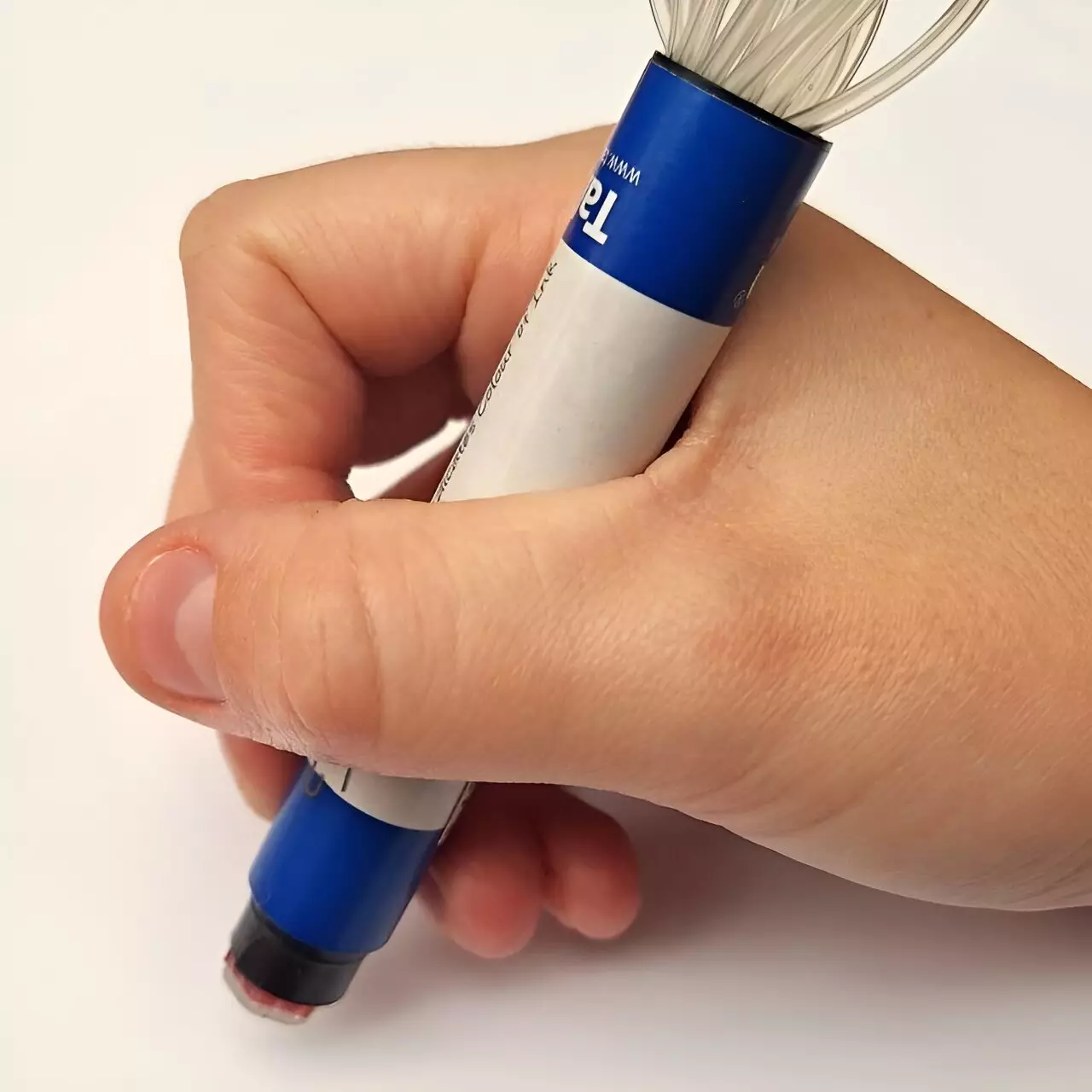Recent reports from various literacy organizations have highlighted an alarming decline in Braille literacy among visually impaired individuals. Despite a clear desire among many to engage with this crucial tactile reading system, barriers continue to hinder its widespread adoption. Access to educational resources is notably limited, especially outside urban centers, leaving many aspirants in a state of frustration. As the demand for inclusive technologies rises, the development of innovative solutions is essential to preserving and promoting Braille as a vital communication tool.
In response to these challenges, researchers at the University of Bristol have developed an innovative handheld device known as the Braille-tip. This sleek gadget is designed to bridge the gap between Braille and English text, making the skills of reading and writing accessible to more individuals. Equipped with a sensitive, compact sensor system that can accurately decode Braille bumps, the Braille-tip offers a promising new avenue for independent learning. This device serves as both a tool to aid comprehension and a catalyst for enhanced Braille literacy among the visually impaired.
The Braille-tip operates using a sophisticated system of fluid channels mapped across a one-centimeter sensor with 19 responsive elements. When the tip runs across embossed Braille dots, it captures tactile feedback and converts it into readable English text almost instantaneously. According to lead researcher Dr. George Jenkinson, “The goal of this device is to empower users by enabling them to learn on their own terms, thus fostering a long-term appreciation for Braille.” Early trials have shown an impressive success rate of 84.5%, suggesting a reliable performance that can only get better with refinement.
The technology underlying the Braille-tip is particularly intriguing. Unlike many current devices that rely on complex machine learning algorithms requiring extensive training data, the Braille-tip’s algorithm is designed to be predictive and explainable. This simplicity not only improves portability to other tactile sensors but also enhances the likelihood that the device can be adapted for various applications in everyday life.
As promising as the initial results are, the research team recognizes that further enhancements to the Braille-tip are vital. Dr. Jenkinson emphasizes the importance of involving actual users in the development process. “A co-design approach is fundamental; we need feedback from the very people who will use this technology,” he asserts. Actively including users’ input ensures that the final product meets their needs and expectations, ultimately improving real-world usability and impact.
With potential plans underway to include additional functionalities, the research team is optimistic about the future of the device. Modifications to improve accuracy, comfort, and ease of use could propel the success rate closer to an impressive 100%. For instance, understanding the nuances of how the device should be held during operation could be instrumental in enhancing performance.
Braille is not only relevant in literature but is also an essential feature in public settings, including transportation hubs, elevators, and cash machines. The introduction of the Braille-tip in these environments could significantly elevate engagement levels for those who are visually impaired but lack Braille literacy. Imagine a world where individuals who could not read Braille can confidently navigate their surroundings, experiencing newfound independence through technology.
Such a transformation offers more than just practical benefits; it fosters inclusivity and equality within society. By revolutionizing the way we think about Braille literacy, innovations like the Braille-tip strive to empower individuals, encouraging them to read, write, and effectively communicate within their communities.
The rise of the Braille-tip exemplifies how technology can adapt to social needs, illuminating paths for individuals who grapple with standard communication barriers. Through innovative devices, meaningful collaboration, and a commitment to accessibility, we pave the way for a brighter, more inclusive future for the visually impaired. Active engagement in Braille literacy will not only honor the rich tradition of tactile reading but will also advance society’s collective objective of fostering understanding and acceptance among all individuals, regardless of ability.


Leave a Reply